14 Best Vegetables to Grow in a Fall Garden
If you’re looking to add a little color and flavor to your life this fall, we have good news: You can start a seasonal vegetable garden in almost any climate, though your crops will vary depending on your location. Gardeners in hardiness zones eight and up, who have waited patiently through the hazy heat of summer, can finally get all sorts of vegetable plants started, including tender tomatoes and eggplant. Likewise, green thumbs in northern climates will find success growing vegetables that enjoy the cooler, shorter days of fall, like leafy greens, root vegetables, cabbage, broccoli, and kale.
In order to ensure your fall garden matures before the first frost, get it started in mid-summer (typically late July to early August, depending on your hardiness zone). There are tons of plants that will grow well in cool weather, but many need to be started while it’s still a bit warm outside and the days are longer. You can either start your seeds in pots a bit early in a cool shady spot or look for seedlings at your local garden center and then transplant them into the ground when there is space freed up in your vegetable garden in the fall.
Get inspiration for your autumn bounty with these 14 vegetables perfect for your fall garden.
Plant your seeds deeper in the fall than in the spring. Typically, the ground is warmer having just come off the hot summer months—by planting your seeds a little deeper than the package suggests, you’ll be able to get them down to where the soil is cool and moist.
Consider pelletized seeds. They’re coated in clay and are available for vegetables that take a long time to germinate, like carrots. They retain water better than uncoated seeds, which means less watering and TLC for you.
MSU Extension Landscaping
Monique Sakalidis, Jeanne Himmelein, Thomas Dudek, Jan Byrne — January 25, 2019
A serious fungal disease of boxwood that results in defoliation and decline of susceptible boxwood. A downloadable fact sheet is available.

Origin and distribution
Boxwood blight or “box blight” is a serious fungal disease of boxwood that results in defoliation and decline of susceptible boxwood. Repeated stem infections can kill young plants, and in larger plant specimens defoliation reduces the ornamental value of the plant and infection predisposes bushes to infection by other pathogens and environmental factors leading to plant death.
Boxwood blight was first reported in 1994 in the U.K. and has spread throughout an additional 12 European countries and into Asia (Georgia and Iran). It was also reported in New Zealand in 1998. In 2011, it was detected for the first time in the U.S. in Connecticut and soon after was reported in North Carolina and Virginia. Around this time, it was also reported in British Columbia, Canada.
Boxwood blight has now been reported in 28 U.S. states (AL, CA, CT, DE, FL, GA, IL, IN, KS, KY, MA, MI, MD, MO, NC, NH, NJ, NY, OH, OR, PA, RI, SC, TN, VA, WA, WI, WV), and it was detected for the first time in Michigan in 2018. In Canada, it has been reported in British Columbia, Ontario and Quebec. The prediction is that boxwood blight will continue to spread throughout boxwood growing areas of North America.
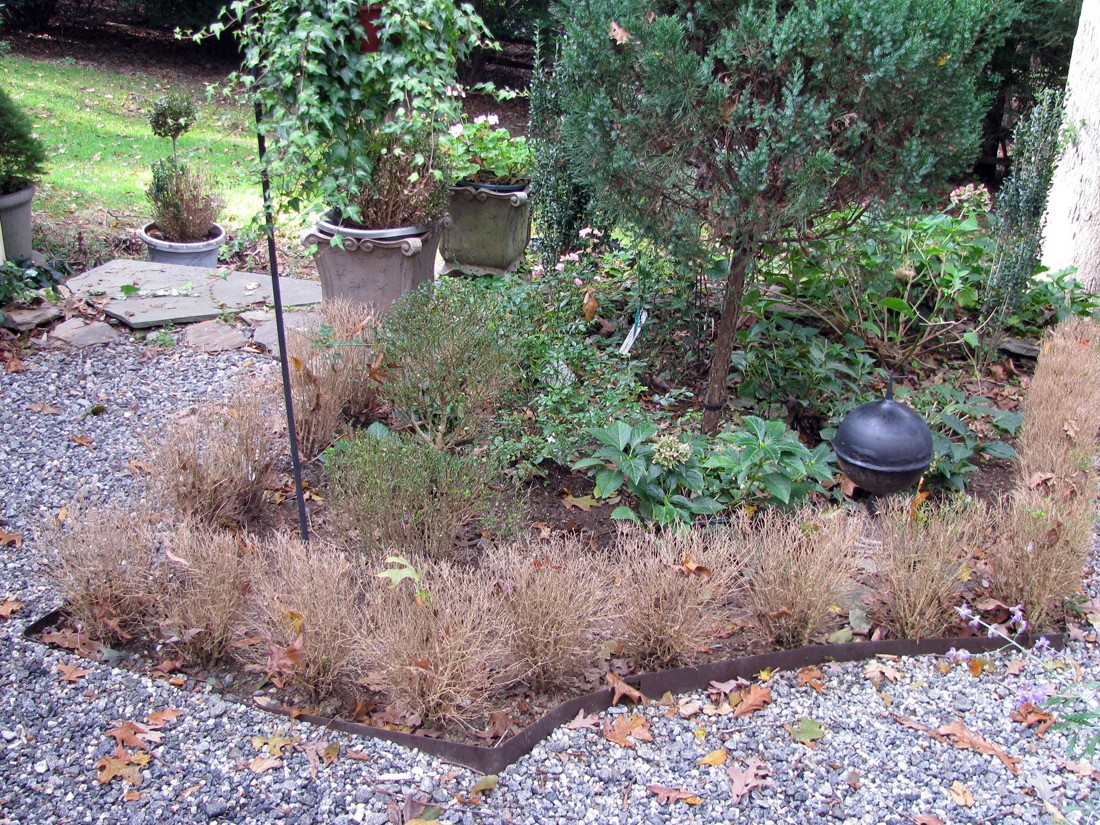 Photo 2. Boxwood blight in a residential property. Photo by Mary K. Inman, University of Connecticut.
Photo 2. Boxwood blight in a residential property. Photo by Mary K. Inman, University of Connecticut.
Host range
Several genera in the plant family Buxaceae are susceptible to this disease this includes Pachysandra terminalis (Japanese spurge), Pachysandra procumbens (Allegheny spurge) and Sarcococca species (sweetbox) and of course Boxwood (Buxus species). There are 95 species of Buxus worldwide, with four species and several hybrids and 365 cultivars available in the U.S. English boxwood, Buxus sempervirens ‘suffruticosa’ and American or common boxwood, B. sempervirens, are highly susceptible to boxwood blight.
No boxwood species is known to be completely resistant to infection. Some varieties can show partial resistance, however, these partially resistant varieties can harbor the pathogen, allowing nearby susceptible varieties to become infected.
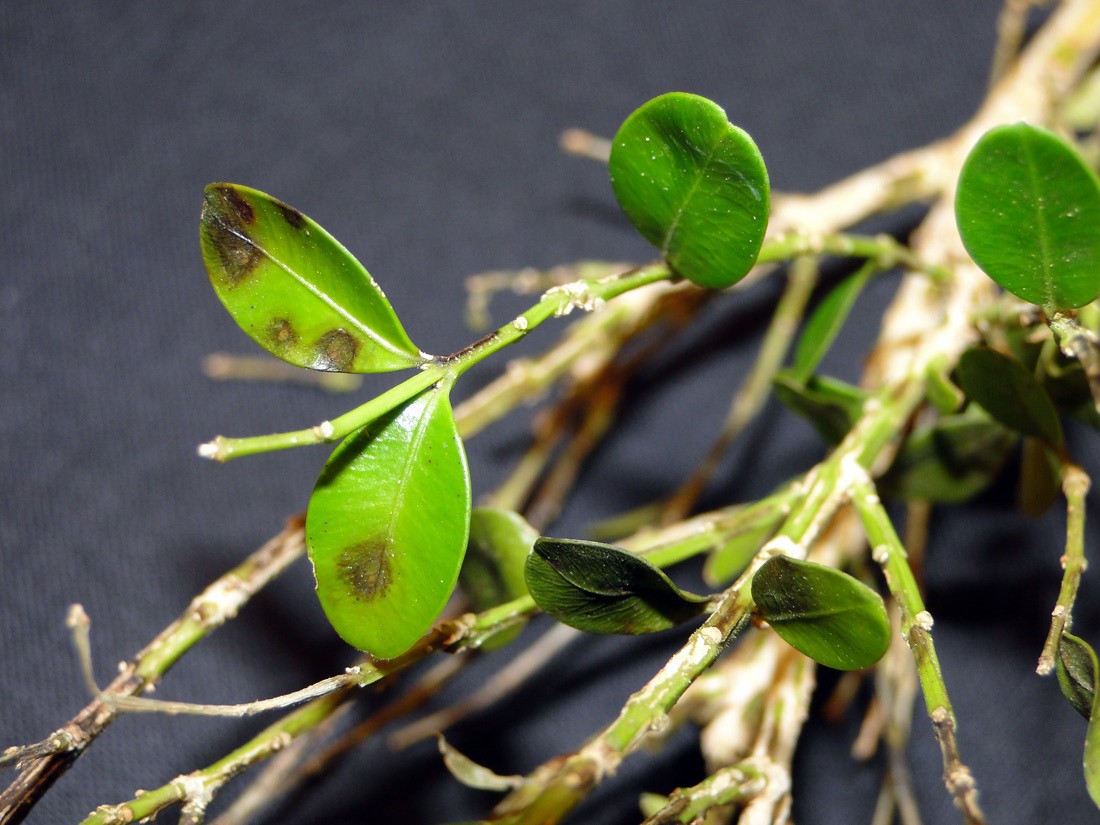 Photo 3. Leaf spot symptoms. Photo by Sharon M. Douglas, University of Connecticut.
Photo 3. Leaf spot symptoms. Photo by Sharon M. Douglas, University of Connecticut.
Fungus description and plant symptoms
Proper analysis by a diagnostician from a land-grant university or State Department of Agriculture is recommended because boxwood blight symptoms are similar to other boxwood diseases, insect feeding damage and abiotic disorders. It is important to note that this disease can infect boxwood at all stages of production from propagation to finished material as well as landscape plantings (Photos 1 and 2).
Often the first symptom noticed is a large amount of rapid defoliation (leaf drop), which is indicative of a severe infection. Generally, part of the plant will become chlorotic or brown, and leaves will rapidly fall to the ground, leaving bare branches behind. Initial symptoms are generally first observed in late spring or early summer when close examination of boxwood leaves may reveal round, dark or light brown leaf spots with darker borders and potentially a yellow halo (Photo 3). These spots eventually grow larger and coalesce, before turning brown or straw-like and dropping to the ground.
Black, elongated, streaking lesions may also be visible on the stem (Photos 4 and 5). These can occur on the stem from the soil line to the shoot tips. If the weather is humid, the underside of the leaf will have a white, frosty appearance caused by the formation of upright bundles of fungal spores.
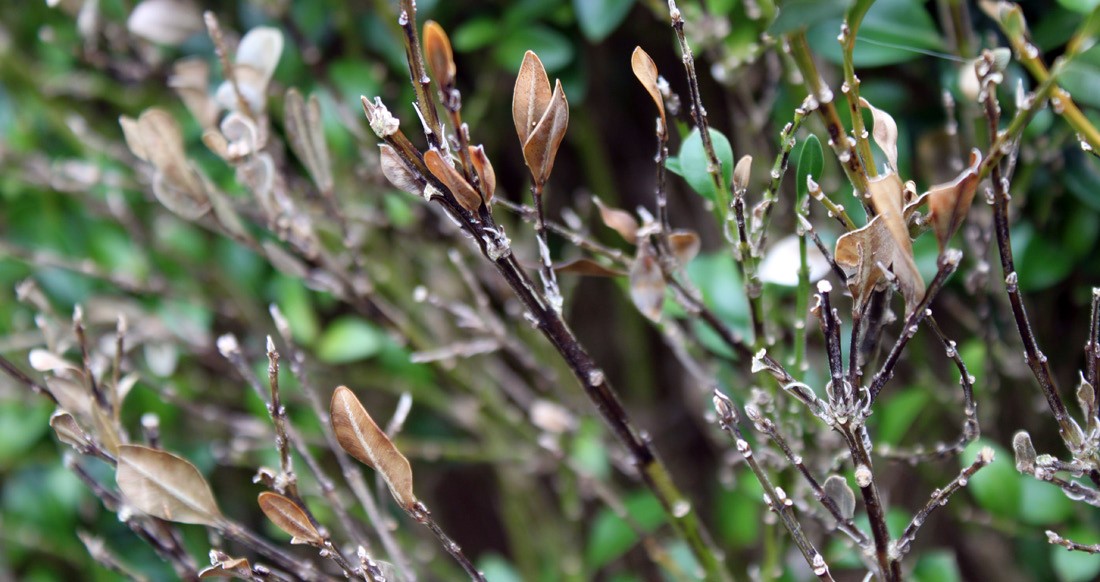 Photo 4. Blighted leaves, defoliation and stem lesions. Photo by Peter W. Trenchard, University of Connecticut.
Photo 4. Blighted leaves, defoliation and stem lesions. Photo by Peter W. Trenchard, University of Connecticut.
How is it spread?
The fungus that causes boxwood blight produces sticky spores. These spores can attach to animals (birds, deer or people), plant material, tools, equipment, shipping containers and vehicles. The major means of spread of this pathogen is by movement of contaminated plant material (e.g., fallen, infected leaves, container or field-grown boxwood, boxwood greenery used for holiday decoration), but boxwood blight spores can also be spread on pruning tools, clothing, equipment and anything that might have contacted infected plants. The spores may be moved over short distances (between plants, within hoop houses or within a field) by wind-driven rain or splashing irrigation water.
Long-distance spread of this disease occurs via movement of infected plants or plant debris, or from infested soil or equipment. The resting spore structures (microsclerotium) that the pathogen produces ensures the pathogen can persist in plant debris on the soil surface or buried below the soil surface for up to five years.
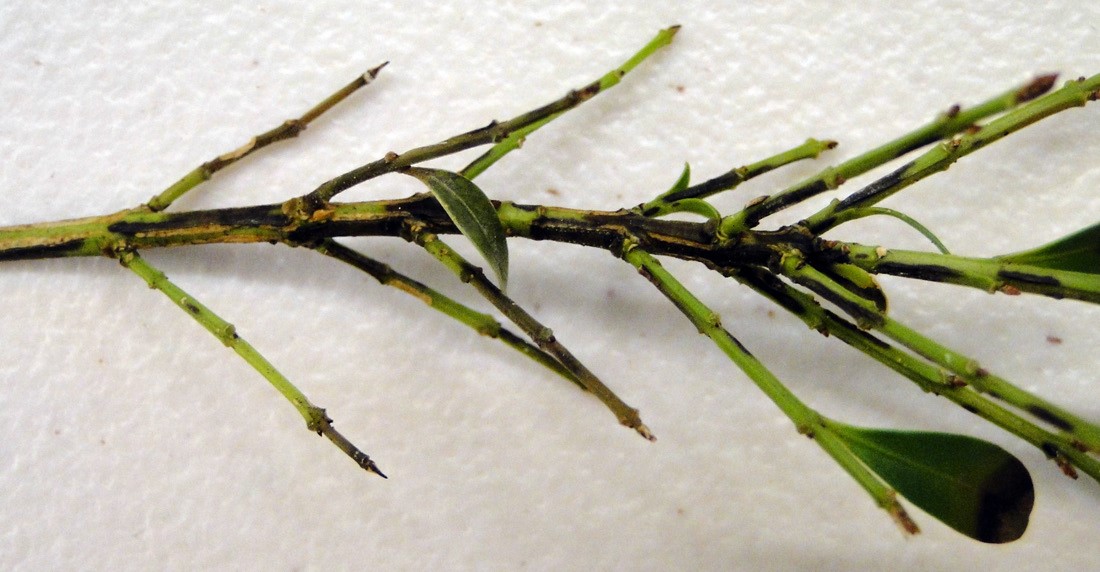 Photo 5. Black stem lesions. Photo by Peter W. Trenchard, University of Connecticut.
Photo 5. Black stem lesions. Photo by Peter W. Trenchard, University of Connecticut.
Life cycle
This pathogen can complete a life cycle in one week under warm and humid conditions. Fungal growth occurs in a broad temperature range from 41 to 86 degrees Fahrenheit with the optimum temperature for reproduction at 77 F.
Like many fungal diseases, moisture is necessary for infection. Free water from dew, irrigation and rain play a part in the severity of the disease and is an element to carefully monitor. This fungus does not need a wound to infect the plants it can readily penetrate the cuticle and epidermis. It produces spores in clumps that can be seen on the undersides of infected leaves and on the black lesions on stems (Photo 6). The fungus survives in leaves and cankers as well as in leaf debris that has been infected.
The boxwood blight pathogen can persist for long periods of time because of specialized structures called microsclerotia that are present on fallen leaves. The overwintering fungus will produce spores that are capable of infecting host plants under appropriate environmental conditions.
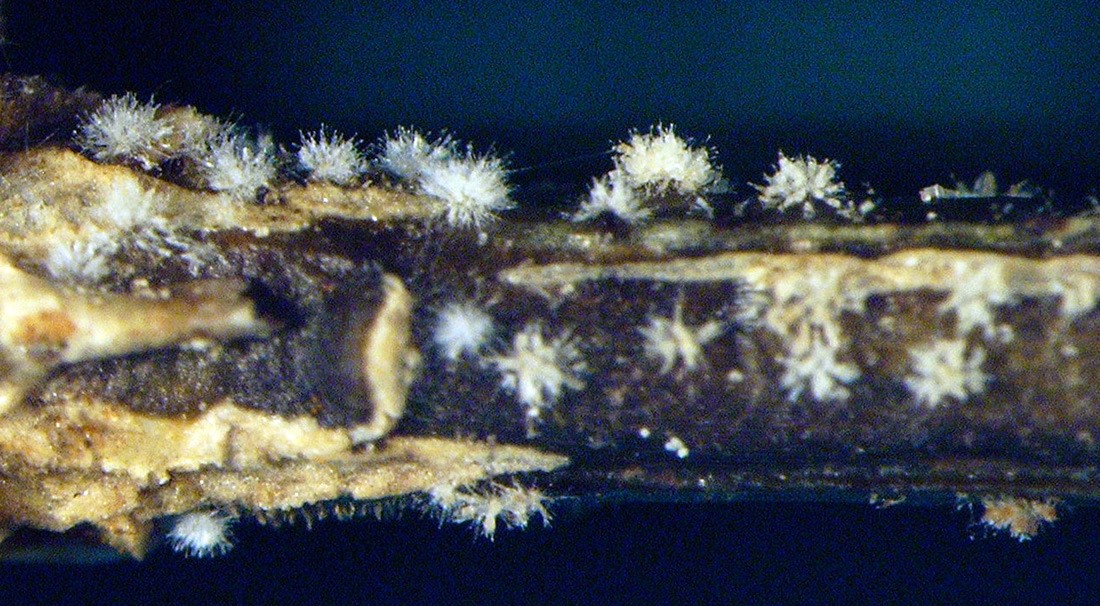 Photo 6. Sporodochica on stem lesion. Photo by Sharon M. Douglas, University of Connecticut.
Photo 6. Sporodochica on stem lesion. Photo by Sharon M. Douglas, University of Connecticut.
Integrated pest management (IPM) strategies
The best methods for Michigan nurseries to minimize the risk of boxwood blight introductions include purchasing plants from nurseries that participate in the “Boxwood Blight Cleanliness Program,” carefully inspecting incoming plants and potentially quarantining incoming plants (as fungicides can mask symptoms) for four weeks. Remember, even resistant varieties can harbor a “cryptic infection” (not visible), so make sure your plants come from a reputable source.
However, if an incursion does occur, there are integrated management options that can be used to prevent or limit the spread and reduce the impact it can have in Michigan. This includes preventing further introductions, sanitation, scouting, chemical control and using resistant cultivars.
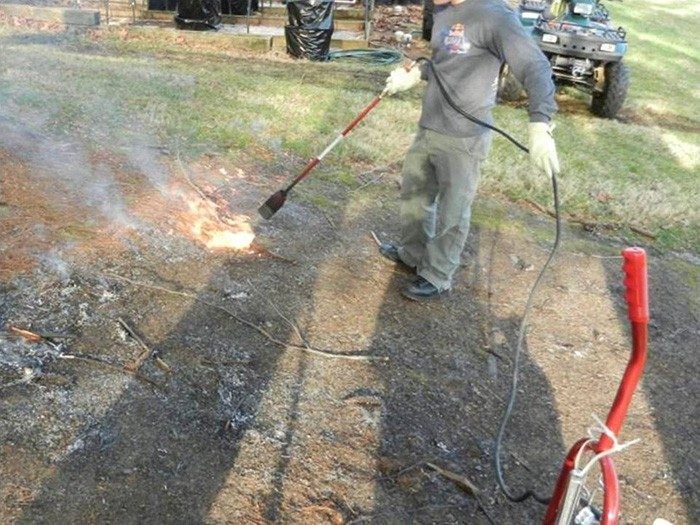 Photo 7. Destruction of plant debris using a flamethrower. Photo by Virginia Cooperative Extension, Virginia Tech and State University.
Photo 7. Destruction of plant debris using a flamethrower. Photo by Virginia Cooperative Extension, Virginia Tech and State University.
Scouting the crop for the disease is a critical step in managing boxwood blight. Both boxwood and Pachysandra should be regularly scouted for signs of disease. In greenhouses, temperature and moisture management can reduce the infection potential and disease spread. In nurseries, proper water management can reduce disease spread. Using drip irrigation systems eliminates the splashing of water from an overhead irrigation system.
If boxwood blight is confirmed, it is critical to remove all infected material (whole plants, fallen debris) and either double bag and dispose/bury or burn (Photo 7). Fungicide trials have been performed in several states and efficacy data on various fungicides is available. Michigan State University Extension educators can assist growers and homeowners with fungicide recommendations.
Download the printable, PDF version of this fact sheet: Boxwood blight disease identified in Michigan
This article was published by Michigan State University Extension. For more information, visithttps://extension.msu.edu. To have a digest of information delivered straight to your email inbox, visithttps://extension.msu.edu/newsletters. To contact an expert in your area, visithttps://extension.msu.edu/experts, or call 888-MSUE4MI (888-678-3464).
Did you find this article useful?
Лучшие сорта безрассадных томатов

Безассадное выращивание томатов практикуют в южных областях, но этот способ подойдет и для средней полосы, если по каким-то причинам вы не успели вырастить или приобрести рассаду. Как получить хороший урожай томатов из рассады, знает, наверное каждый огородник. А пробовали ли вы посеять семена прямо в грунт? Конечно, сеять их придется куда позже и сорта выбирать самые скороспелые. Но результатом, хоть поверьте, хоть проверьте, вы останетесь довольны! Чем не вариант огородода без хлопот!
Glottiphyllum is a genus of about 57 species of succulent subtropical plants of the family Aizoaceae. The genus name comes from the ancient Greek «glottis», meaning «tongue» and «phyllon», meaning «leaf». The species are native to South Africa, specifically to Cape Province and the Karoo desert. They grow in rocks and soils incorporating slate, sandstone and quartz.
Click on the photo or the name of the succulent plant for which you wish to see further information.
WJw 0Kv zW3 abx tsB sOA CPz RWA ica 8dJ TSp Jjx fBb vlA ea8 FQZ 6zf qhF 133 Hi8 rXM ImS V6J unm x33 5Ga 4×7 nKa ud1 h34 esr 5oL vVb rMg 4Fb 6Ry b1R 99D 7rT kPj vrX tWI IJi pz5 mLJ qaq 9fc qQZ mi5 NKl PVV n15 yK7 63v kZy P2N Zbt 2H2 TuM Now 5Mw wTI w0o UtG SFw ftM 8yc NPI ujS Clk 4pH D59 LBI g5w 7HF F4K Fx2 kgo cki 8zk Aef OYF FsF 6u7 xLU l5U Tep tYQ QKO 9v7 1Lm pN9 pYd BY1 9cG 9aS KdB Jg1 dkl 0hh KKt Mhf PCU lQr Opw DEs xHV Ynx GNi lmV Aax uXx s9a ab6 2Kf e6V e3l ZcP 07U 7z3 bDt Osz rRb CUe Isj m7t ies P3y 3sC DuQ Azl DKQ ZOg pFh 6gS mnn FcY 9v8 rPx